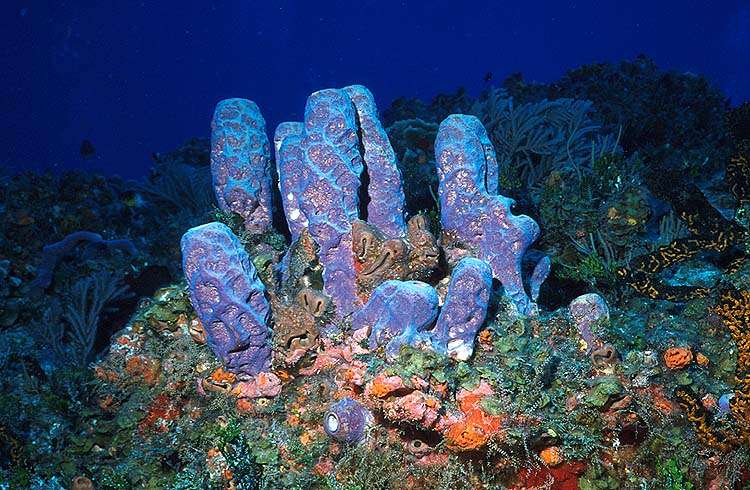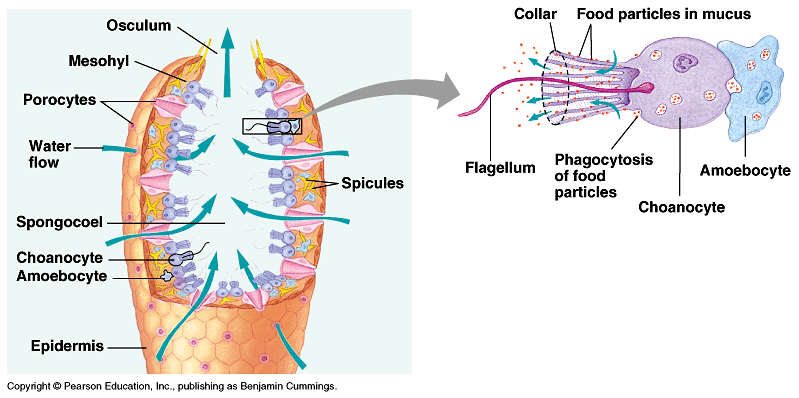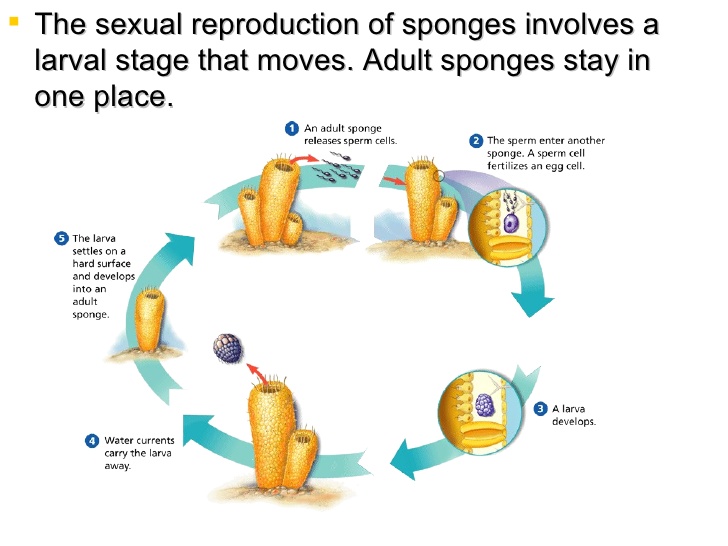
Phylum Porifera
- These are the sponges
- There are about 5000 species of sponges in the world
- Most are marine, some are freshwater
- Most live in shallow water (although some have been found very deep)
- They are sessile (they don't move)
- They are filter-feeders (they filter their food from the water)
Body structure
- asymmetrical
- many colours, shapes and sizes
- some species are solitary, others form colonies
- they have no tissues
 |
| Diagram of a simple sponge |
Sponges contain different cell types, each cell acts like an individual (pseudotissue)
The epidermis covers the outer part of the sponge, but there are holes in the epidermis formed by the porocytes. Water enters the spongocoel (or archenteron) of the sponge through the porocytes and leaves through the osculum (gátornyílás). The current is created by the choanocytes (or collar cells) (galléros ostoros sejtek), which have a flagella that beats to move the water. As the water moves past a choanocyte, it catches the nutrients out of the water with its flagella and collar. Sponges eat plankton. Amoebocytes (vándorsejtek) are cells that look and move similarily to amoebas. They come up close to choanocytes, collect nutrients from them and carry the nutrients to other parts of the sponge where it is used. Amoebocytes also produce chemicals to form spicules (szivacstűk), which are found in the mesohyl (or internal jelly-like layer) of the sponge.
Reproduction
Sponges reproduce asexually and sexually.
Asexual reproduction can be by budding or fragmentation.
A bud in an external growth on a sponge. It can drop off and float away and settle and grow elsewhere, or it can remain attached to the parent, forming a colony.
 |
| Sponge colony |
Sexual reproduction occurs when sponges produce eggs and sperm. Sponges are hermaphrodites (hímnős), so they produce sperm that are released into water to travel to other sponges and eggs that remain in the parent sponge.

Classification
There are 4 groups of sponges and they are classified based on the composition of their spicules.
1. Calcareous sponges (mészszivacsok) - limestone spicules
2. Glass sponges (kova- vagy üvegszivacsok) - silica spicules
3. Horny sponges (szavúszivacsok) - spongin spicules (this is material like keratin) eg. bath sponges
4. Glass-horny sponges (kovaszarúszivacsok) - both spongin and silica spicules, eg. common freshwater sponge, Balaton sponge
No comments:
Post a Comment